Here’s a fixture for clamping down a bow for working in on its limbs. It’s especially useful for hacking on the limbs of low draw weight bows since the tip(s) can be clamped down which renders the limbs more in-mobile than just clamping the handle in a vise or such. Basically, it’s a vise made from a pipe clamp, pipe nipple and pipe flange fastened to a 2x4.
For hacking on a reflex/deflex with a bad case of limb twist:

Several wraps of a rubber strip cut from an inner tube secures the tip quickly. It doesn’t interfere with one’s work as much a clamp does. For lighter bows and/or heavy work, wedge a padded block under the mid limb to help steady it. The limb in the foreground can be worked from both sides. Alas, the other can only be worked from one side since the fixture is clamped to a bench vise. Mounting the vise to the floor via heavy post would work better.
For working on a bow’s back a block under the tip is used:

The bow above has a reflexed limb so it’s other end clamped directly to the 2x4. This straightens out the limb some and allows for better work with flat tools like files and such. For light bows or heavy work, padded blocks wedged under the limb also help.
For securing handles narrower than ~1.5”, a chunk of wood is added as a spacer:
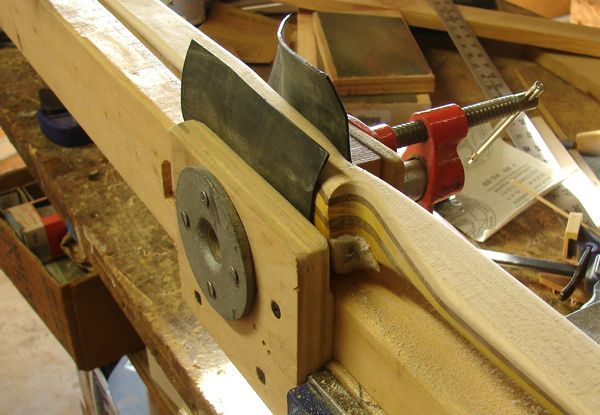
The bow’s handle is close to finished so a piece of tire inner tube is used for padding.
Rounding a belly edge:
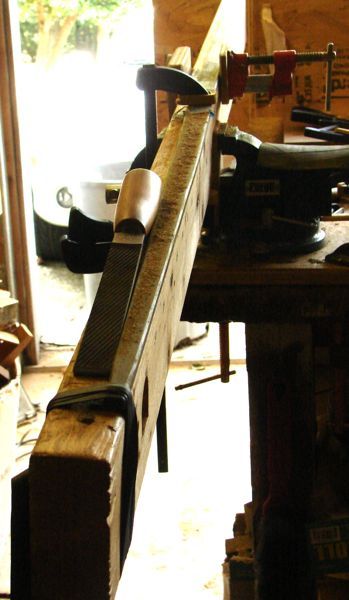
The “pipe vise” isn’t used since I need to get the belly and edge of the bow with a file. Arranging for light at a good angle helps see where you’re removing wood and how much. A digression... the file is my favorite for rounding as well as tillering- a Iwasaki File 200mm Flat Fine Cut. It removes wood fast but leaves a scraper finish type surface and doesn’t clog easily. The only downside- other than the price (~$30)- is that you have to adapt to using a light amount of pressure and really let it do the work. A closeup:
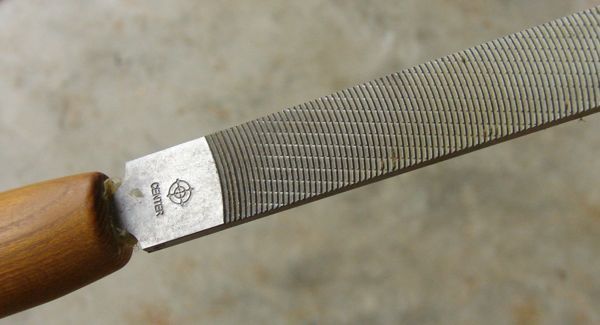
Back to the main subject...
DetailsPipe nipple, clamp and floor flange are 1/2”. Maybe use 3/4” if you use a lot of force draw knifing and such.
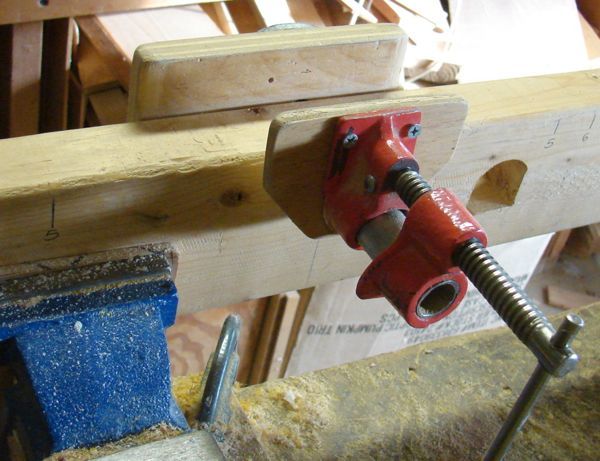
Two short screws secure this wood jaw to the pipe clamp. Squared-off hole on right side of 2x4 allows the fixture to be clamped to the workbench. The higher mounting height afforded by clamping the fixture in the bench vise works better for me with tired old eyes. Faster to remove the fixture from the bench also. Clamping to bench works better for heavy work on staves.
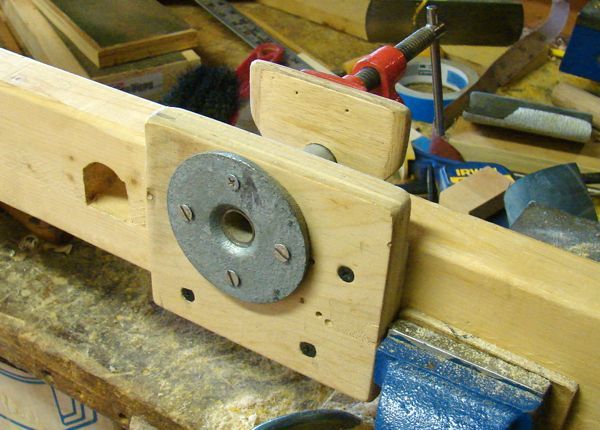
The pipe floor flange is secured to the 2x4 via a piece of 3/4 plywood with one short and 3 long screws. I'm sure you'll do a better job and countersink the screws!

The plywood is screwed and glued to the 2x4. Locate and drill a tightly sized hole for the pipe nipple in the 2x4 first and layout the other parts around it. The nipple should be about 1/8” below the top surface of the 2x4. If I was making another one, I’d use a bit narrower piece of plywood.
c.d.